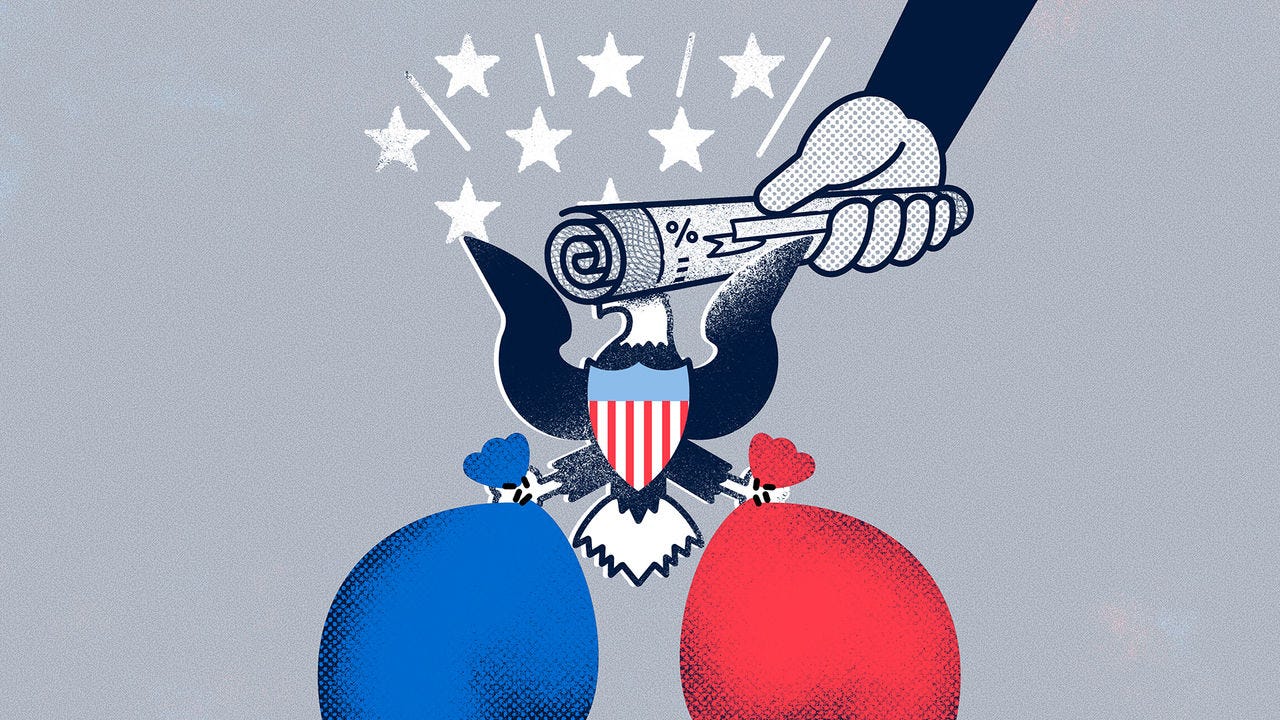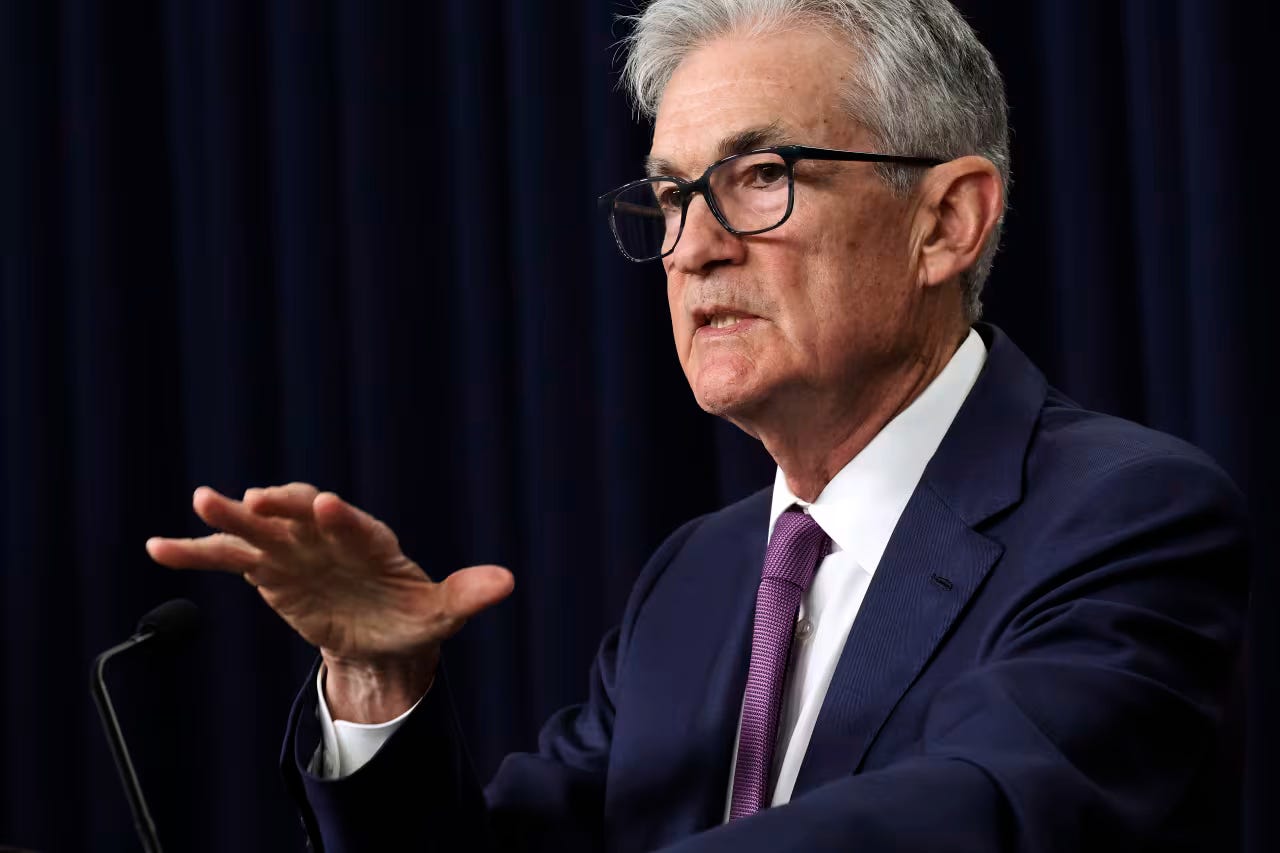Defying Gravity: Markets Rally Despite Rising Yields
Investor optimism collides with debt fears this week, as markets navigate between strong earnings and mounting macro pressures.
Last week's market tumult, sparked by surging bond yields amid inflation worries and political uncertainty, gave way to a robust recovery this week. American equities staged an impressive comeback, with the Dow Jones Industrial Average climbing 3.7%, outpacing both the S&P 500 and tech-heavy Nasdaq, which rose 2.9% and 2.4% respectively. Here's what changed.
Inflation Cooling: CPI numbers published on January 15, eased inflation concerns, which indicated that inflation rose slightly but remained in line with expectations. This alleviated concerns about persistent inflationary pressures that would keep interest rates higher for longer.
Trump’s Stance on Tariffs: President Trump's calmer-than-expected tone on tariffs after his inauguration triggered a “relief rally” in markets. The absence of immediate, broad tariff announcements reassured investors who had anticipated more aggressive trade policies. However, markets remain volatile amid concerns about potential 25% tariffs on Canada, Mexico, and the EU starting February 1st—measures that could dampen economic growth, boost inflation, and keep interest rates elevated. Trump's recent statement that he "would rather not" impose tariffs on China, however, lifted Asian markets, with Hong Kong's Hang Seng and China's CSI 300 advancing on hopes of averting a trade war.
AI Optimism: The newly announced "Stargate" AI initiative drove tech sector gains this week. The $500 billion, 4-year project—a collaboration between OpenAI, SoftBank, and Oracle Corp—focuses on the development of AI infrastructure and data centers, promising U.S. re-industrialization and job creation. The initiative was welcomed by investors: the Roundhill Magnificent Seven ETF rose 1.7%, while the iShares Semiconductor ETF gained 2.5%. Trump's revocation of Biden-era AI safeguards and pro-tech industry stance have further fueled investor optimism in the sector.
Strong Earnings Season: Bank earnings kicked off the season positively last week, with JPMorgan and Bank of America beating expectations. The momentum continued as Netflix and Procter & Gamble delivered robust results this week, with reporting companies driving nearly half the Dow's gains in a single session.
Share Buybacks Window: Share buybacks are set to drive stock markets higher as a major share repurchase window opens on January 24. Following Q4 2024 earnings blackout periods, companies comprising 45% of the S&P 500's market value can resume buybacks, building on last year's record $1.34 trillion in announced repurchases. Goldman Sachs expects this trend to continue, projecting over $1 trillion in buybacks this year as companies deploy cash to return capital to shareholders.
Cash Ready for Deployment: Money market funds saw their largest inflow since March 2020, attracting $143 billion in the week ending January 10. This signals investors are maintaining substantial cash reserves, ready to deploy into equities once market conditions show signs of stabilizing.




However, bond yields remain stubbornly high despite the equity rally. Though yields briefly dipped on higher-than-expected jobless claims (223,000 vs 221,000 forecast) suggesting cooling wage pressures, the trend remains upward: the 2-year Treasury hit 4.31%, the 10-year 4.64%, and the 30-year 4.85%. This pattern spans borders, with Britain's 10-year gilt reaching 4.90% and similar upswings in Japanese and German bonds. This unusual divergence between rising stocks and persistent yields reflects deeper concerns in the bond market.
Start with the return of Bond Vigilantes. Rising government bond yields are a sign that investors are losing faith in the government’s ability to manage the economy. Bond vigilantes are a sort of market watchdogs that challenges the notion of “free government spending”. They act by selling government bonds when they believe government policies have become fiscally reckless or unsustainable. Their collective selling pushes yields higher, effectively raising borrowing costs across the economy. Think of bond vigilantes as the market's way of enforcing fiscal discipline. When they perceive unsustainable spending or inflation risks, they vote with their portfolios. This selling pressure increases bond yields, which in turn, raises borrowing costs for the government and other borrowers. When bond yields rise, it sends a signal to the government and the market that investors are concerned about inflation or the country's fiscal health. In doing so, they pressure governments to rein in deficits through spending cuts or tax increases. In today's environment of mounting federal debt, their influence on interest rates could force tough policy choices and act as a check to fiscally irresponsible policies. In the US, in particular, bond vigilantes are driving up long-term yields in response to inflation concerns and the potential for increased government borrowing to fund Trump’s ambitious agenda an expected tax-cuts. This is why even as the Fed has been cutting short-term rates, the bond market has not been following along, hinting at a worrying loss of control by the Fed.
The Fed's quantitative tightening (QT) program, running since June 2022, is the second factor driving yields higher. QT is a monetary policy tool used by central banks to reduce the size of their balance sheets and tighten monetary conditions. The Fed engages in QT by decreasing the amount of assets it holds, which is the reverse of quantitative easing (QE). In practice, the Fed reduces its asset holdings by not reinvesting all the proceeds from maturing securities, such as Treasury bonds and mortgage-backed securities. This means that as these assets mature, they are removed from the Fed's balance sheet. As assets on the Fed's balance sheet decrease, the corresponding liabilities, which are mainly bank reserves, also decrease. This reduces the amount of money in the financial system. By reducing Treasury holdings through limited reinvestment of maturing securities, the Fed adds supply to the bond market. Wall Street expects this $25 billion monthly reduction to continue until March 2025. This increased Treasury supply in the market typically puts upward pressure on yields because it reduces the demand from the Fed. As the Fed reduces its purchases, more government debt is available in the open market for private investors to absorb. This increase in the supply of bonds, without a corresponding increase in demand, tends to drive down bond prices. Because bond prices and yields move inversely, the decrease in bond prices translates into higher bond yields.
With bond vigilantes circling and the Fed's balance sheet shrinking, markets face competing narratives. While strong earnings, AI optimism, and record cash levels fuel equity gains, the stubborn rise in global bond yields signals growing unease about fiscal and monetary policy. This tension between stock market enthusiasm and bond market skepticism suggests volatility ahead, particularly as Trump's trade policies and the Fed's monetary tightening continue to shape market dynamics.



